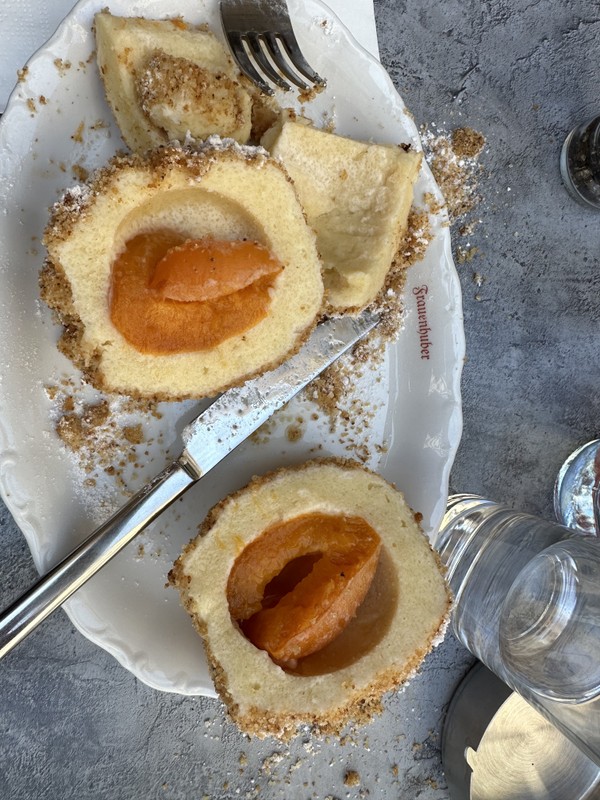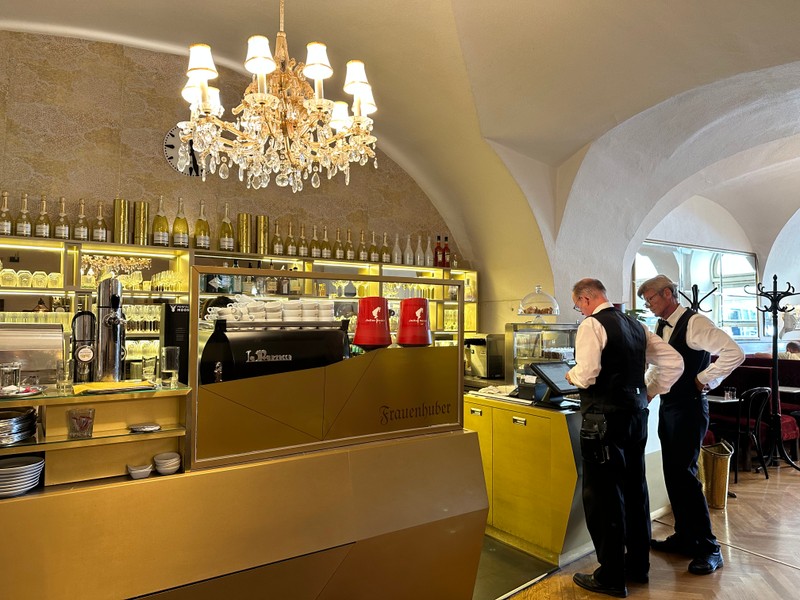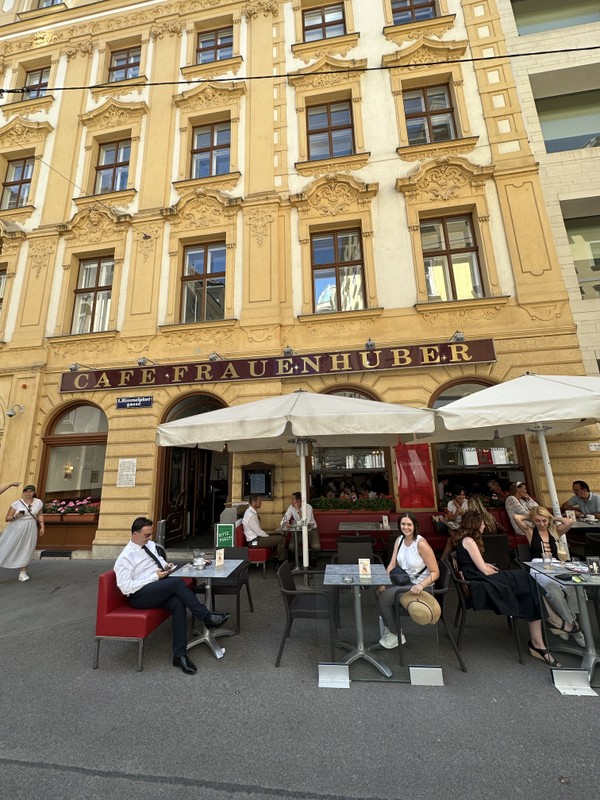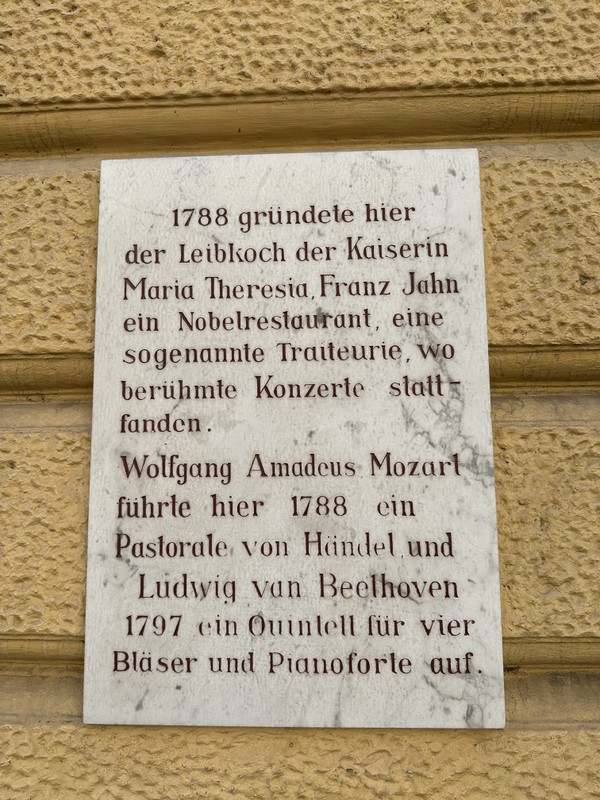Cafe Fauenhuber
Introduction
Text-to-speech Audio
Himmelpfortgasse 6 has been home to various businesses and tenants since the 1300’s. Its earliest mention is as a bathhouse Between 1782 and 1791, when the location became a popular cafe, Mozart and Beethoven played regularly for dining guests. It has been Cafe Frauenhuber since1824, and is known today as one of Vienna’s oldest cafes and a cultural institution in this city that treasures cafe culture.
Images
Marillen Knoedel at Cafe Frauenhuber

Interior of the coffee bar at Cafe Frauenhuber

Exterior at Cafe Frauenhuber

Historical marker at Cafe Frauenhuber

Backstory and Context
Text-to-speech Audio
Vienna’s cafes are as much a part of the culture as its baroque palaces, fine museums and famous music. For centuries people have gathered in Vienna’s many coffee houses to visit, study, debate, date, and enjoy this vibrant city and its sophisticated traditions. Artists, musicians, aristocrats, and revolutionaries alike met in Viennese coffee houses to share ideas and start intellectual movements. Historically and today these cafes are the heart of Viennese culture.
Several coffee houses have long histories and storied pasts but the oldest is Cafe Frauenhuber, which has been a cafe at this location for 200 years. Prior to being a cafe, in 1795, it was the restaurant of Maria Theresa’s former personal chef, Franz Jahn. Perhaps its greatest claim to fame is that both Mozart and Beethoven played their music here. Historical records show that Mozart performed a Handel pastorale in November of 1788 and Beethoven performed his “Quintett for Fortepiano with Four Horns” in April 1797.
Cafe Frauenhuber is still a favorite today, serving traditional Austrian dishes and desserts. It is open Monday through Saturday, 8:00-8:00. It has separate breakfast, lunch, and dinner menus but guests can also just enjoy a coffee drink in the comfortable, charming atmosphere.
For my lunchtime visit, I sat outside to enjoy the fine weather and people watching. I ordered the special of the day; salad and Marillen knoedel. The waiter was typically efficient and showed no interested in anything other than delivering food. The Greek salad was lovely and beautifully dished on a plate that bore the name of the restaurant. The knoedel were a surprising follow up to such a savory salad. Marillen knoedel are large fried dough balls filled with apricot and sprinkled with powered sugar. This made for a delightful brunch dish and I did my best to finish these fine spheres that looked like geodes. Like any good geode, the tart apricot center was a surprise in both color and flavor.
To really feel the history of Cafe Frauenhuber, one must go inside. The interior is classically white with a gorgeous architectual ceiling. The bling and shine comes from several beautiful chandeliers hanging from the stunning ceiling. There are several alcoves for quiet dining and the pastry case merits a serious look. Both Mozart and Beethoven are referenced in the plaque outside the cafe.
Sources
Eckerstorfer, Christina . 10 coffeehouses that have inspired Vienna’s greatest artists and writers, November 3rd, 2018. Accessed July 3rd, 2023. https://www.cafefrauenhuber.at/index.php/en/food-drinks, https://viennawurstelstand.com/guide/10-coffeehouses-that-have-inspired-viennas-greatest-artists-and-writers/.
